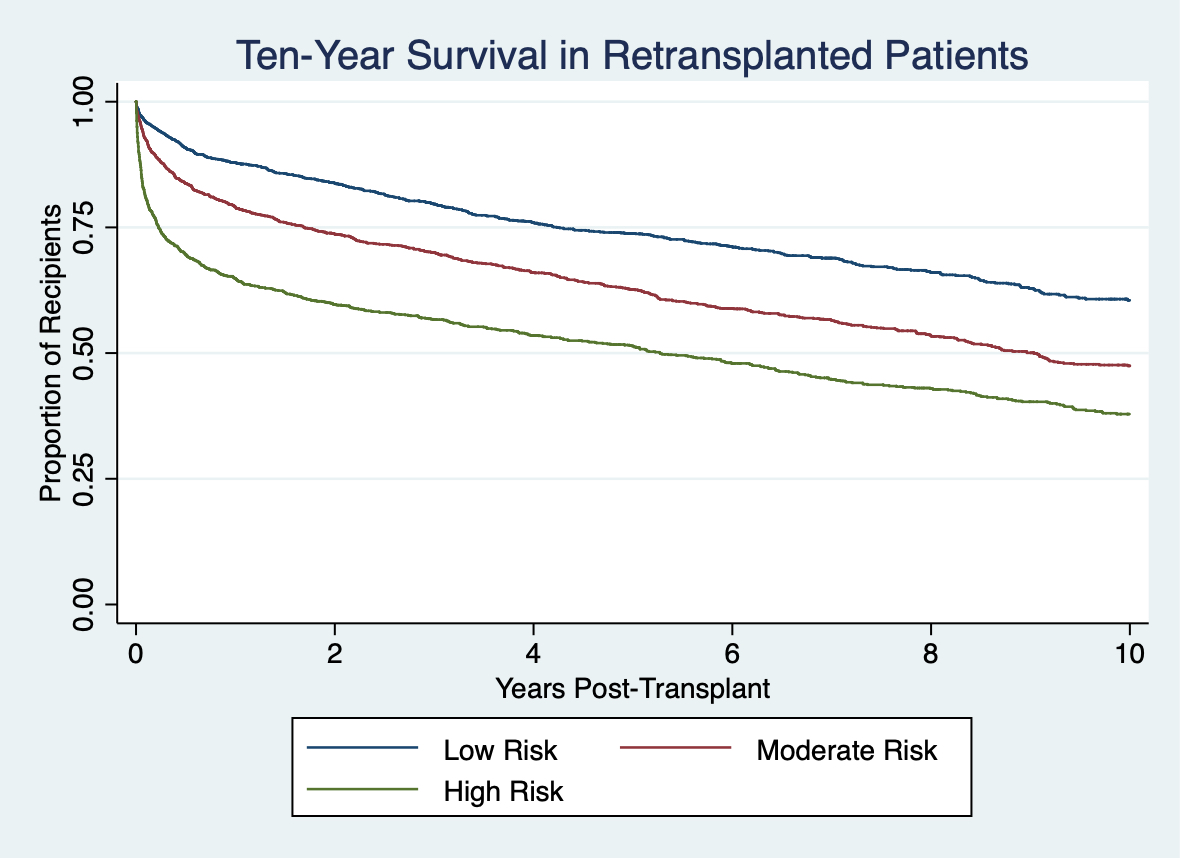Predictive Index for Liver Retransplantation
Baylor College of Medicine, Houston, TX
Meeting: 2021 American Transplant Congress
Abstract number: 338
Keywords: Liver transplantation, Mortality, Prediction models, Retransplantation
Topic: Clinical Science » Liver » Liver: Retransplantation and Other Complications
Session Information
Session Name: Post Liver Transplant Management and Complications
Session Type: Rapid Fire Oral Abstract
Date: Tuesday, June 8, 2021
Session Time: 4:30pm-5:30pm
 Presentation Time: 4:50pm-4:55pm
Presentation Time: 4:50pm-4:55pm
Location: Virtual
*Purpose: Given the increase in demand for donor livers, it has become more critical than ever to predict mortality in order to identify the best possible use of a donor organ. This is particularly true in cases involving retransplantation, which is increasing in prevalence despite overall poorer outcomes. Our aim was to develop a predictive index for liver retransplantation to predict mortality based on donor and recipient characteristics.
*Methods: Using the OPTN database, we performed univariate and multivariate analysis on 5,183 liver retransplantations to identify independent donor and recipient risk and protective factors for post-transplant mortality. This retrospective analysis was used to create a weighted score that can be used to predict post-retransplant mortality.
*Results: We found 14 factors to be significant and weighted them according to their odds ratio to generate an r-SOFT (Retransplant Survival Outcomes following Liver Transplantation) score with a C-statistic of 0.705. We then generated a Kaplan-Meier curve to estimate survival at ten years post-retransplant, stratifying patients into low-, moderate-, and high-risk groups by tertile. The most significant risk factors for post-transplant mortality were hemodialysis prior to transplant and poor functional status, while the most significant protective factors were a short cold ischemia time and recipient age below 30.
*Conclusions: This scoring system can be used to predict mortality post-transplant for patients who have already received a liver transplant. It uses criteria from both the donor and the recipient in order to aid decision-making for patients requiring a second liver and identify transplant patients at particularly high risk.
To cite this abstract in AMA style:
Christmann C, Handing G, McDonald M, Anand A, Keeling S, Galván NT, Cotton R, O'Mahony C, Goss J, Rana A. Predictive Index for Liver Retransplantation [abstract]. Am J Transplant. 2021; 21 (suppl 3). https://atcmeetingabstracts.com/abstract/predictive-index-for-liver-retransplantation/. Accessed December 26, 2025.« Back to 2021 American Transplant Congress

